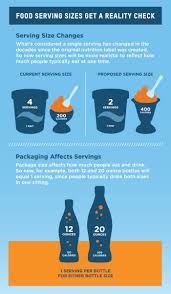In our efforts to improve nutrition and choose “healthy foods”, it can sometimes be a challenge to know what is healthy and what is not. One measure of how a food fits in to your efforts to “eat healthy” is to look at how many important nutrients the food provides for the amount of calories it delivers. Our best bet is to choose foods that deliver the most nutrients – protein, vitamins and minerals – for the fewest calories. Avoiding empty calories is also a good goal. Low-fat dairy foods can be an important part of this plan. Dairy products that have some or all of the fat removed still contain all of the “good” nutrients we want.
 Together, low-fat and fat-free milk, cheese and yogurt provide a unique package of nine essential nutrients that improve overall diet quality and promote good health. The 2010 Dietary Guidelines for Americans recognize that milk and milk products are linked to improved bone health, especially in children and teens, and a reduced risk of cardiovascular disease, type 2 diabetes and high blood pressure in adults.
Together, low-fat and fat-free milk, cheese and yogurt provide a unique package of nine essential nutrients that improve overall diet quality and promote good health. The 2010 Dietary Guidelines for Americans recognize that milk and milk products are linked to improved bone health, especially in children and teens, and a reduced risk of cardiovascular disease, type 2 diabetes and high blood pressure in adults.
What the Dietary Guidelines for Americans Say about Dairy Foods
The Dietary Guidelines for Americans (DGA) encourage all Americans to increase intakes of low-fat or fat-free milk and milk products to the recommended daily amounts:
• 2 cups for children 2 to 3 years
• 2.5 cups for children 4 to 8 years
• 3 cups for those 9 years and older
Milk is the number one food source, in terms of consumption, for three of the four nutrients the DGA identified as lacking in the American diet – calcium, vitamin D and potassium.
According to the DGA, individuals who consume milk at an early age are more likely to do so as adults, so it is especially important to establish in young children the habit of drinking milk. Current evidence indicates intake of milk and milk products is linked to improved bone health, especially in children and adolescents. For women, around 40 percent of initial bone mass is achieved in the first 20 years of life, underscoring the importance of early bone development and health.
Nutrient-Rich Foods, Like Dairy
A positive approach to healthy eating does more than monitor calorie intake – it also maintains a diet that offers maximum vitamins, minerals and essential nutrients. Nutrient-rich foods, like dairy foods, provide essential vitamins, minerals and other nutrients for fewer calories. Nutrient-rich foods from each food group include:
• Brightly colored fruits and 100 percent fruit juices,
• Vibrant-colored vegetables and potatoes,
• Whole, fortified and fiber-rich grain foods,
• Low-fat and fat-free milk, cheese and yogurt, and
• Lean meat, skinless poultry, fish, eggs, beans and nuts.
Dairy’s Health Benefits
Research has shown that:
• Osteoporosis – Dairy’s nutrients are vital to the development of strong bones thus reducing the risk for developing osteoporosis.
• Healthy Weight – Milk and dairy foods may also play a positive role in maintaining a healthy weight.
• Healthy Blood Pressure – Three minerals found in dairy foods – calcium, potassium and magnesium – may play an important role in maintaining healthy blood pressure.
• Cardiometabolic syndrome, Cardiovascular disease, type 2 Diabetes – Current evidence indicates that the consumption of dairy foods is associated with a reduced risk of Cardiometabolic syndrome – a cluster of metabolic abnormalities that increases the risk of cardiovascular disease – and type 2 Diabetes.
Author: Polly Loy, Family and Consumer Sciences Extension Educator, Ohio State University Extension, Belmont County, Buckeye Hills EERA.
Reviewed by: Kathryn Dodrill, Family and Consumer Sciences Extension Educator, Ohio State University Extension, Washington County, Buckeye Hills EERA
References: Dairy Foods and Nutrition Fact Sheet, Midwest Dairy Council, http://www.midwestdairy.com, March 2012.
USDA 2010 Dietary Guidelines, http://www.cnpp.usda.gov/DietaryGuidelines.htm
Nutrient Density Fact Sheet, Clemson University Cooperative Extension Fact Sheet, http://www.clemson.edu/extension/hgic/food/nutrition/nutrition/dietary_guide/hgic4062.html








